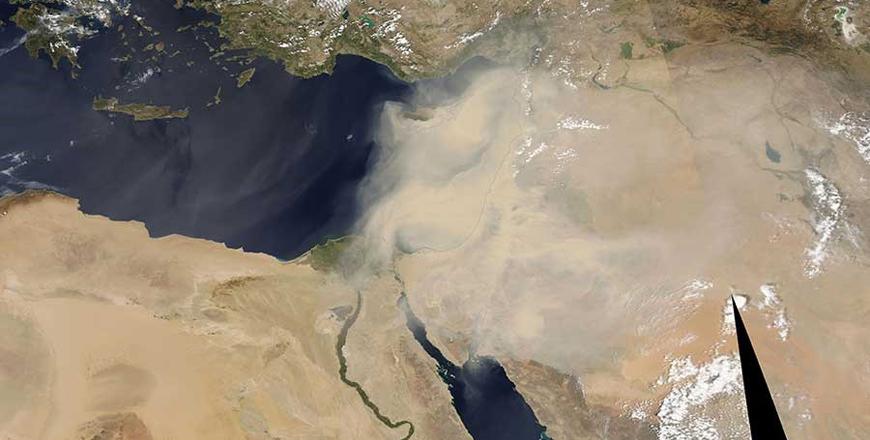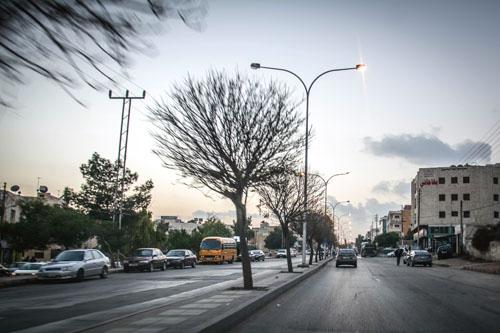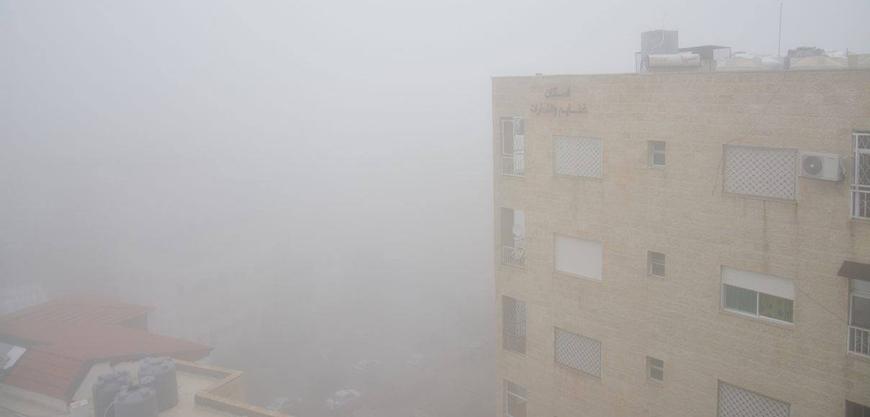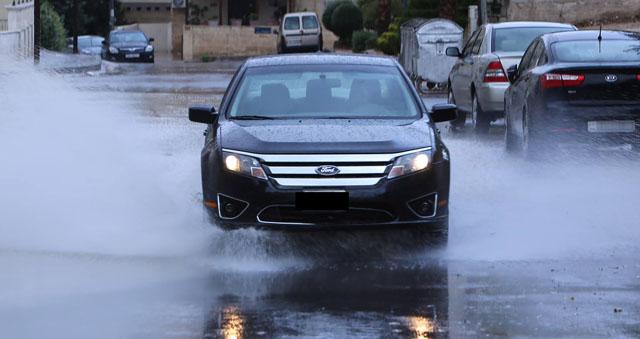You are here
Meteorologists ‘did not see the sandstorm coming’
By Laila Azzeh - Sep 10,2015 - Last updated at Sep 10,2015

Image acquired Tuesday via NASA EarthData shows the Moderate Resolution Imaging Spectroradiometer on NASA’s Aqua satellite which captured this image of the dust storm Monday over the Middle East (AFP photo)
AMMAN –– The “unusual” weather conditions witnessed in several countries in the region, including Jordan, during the past couple of days are attributed to a “rare” metrological phenomenon which forecasters were unable to foresee, according to experts.
The dense standstorm caused at least five deaths in the region and breathing problems in hundreds of cases, according to media reports.
“The Kingdom is witnessing an extraordinary dusty weather during this time of the year due to a thermal low that occurred in a very dry desert between east Syria and west Iraq accompanied by strong winds. This caused a huge standstorm that swept towards Syria,” said Rami Obeid, a meteorologist at the ArabianWeather.Com.
He explained that a thermal low, or heat low, is a surface low pressure that occurs in warm seasons when an air mass warms up, causing a surface low pressure.
“Due to the very high temperatures and the nature of the area, a low air mass has led to the formation of a huge sandstorm that began to move slowly towards the south and southwest by the wind,” said Obeid.
“Unlike depressions, forecasters cannot detect the phenomenon beforehand. It was very intense and rare that we did not see it coming,” he told The Jordan Times on Wednesday.
The effects of the sandstorm will start dissipating as of Wednesday after hitting Iraq, Syria, Jordan, Palestine, Egypt, Lebanon, Cyprus and Gulf countries, especially Saudi Arabia.
Affecting several parts of Jordan, the sandstorm prompted hundreds of schools to close down on Wednesday after the Education Ministry delegated its directors across the Kingdom to decide whether to suspend classes, depending on the prevailing weather conditions.
No fatalities were reported in Jordan, but the Civil Defence Department (CDD) dealt with a total of 390 cases of breathing difficulties and respiratory problems.
“We expect the number of patients who headed to hospitals due to the weather to be more, but those are the ones we transported via our ambulances,” a source from the CDD media division told The Jordan Times.
“No major incidents were reported due to the weather, on the contrary, today was unexpectedly normal under such weather conditions,” a source from the CDD media division told The Jordan Times, noting that most of the cases the department staff handled suffered from other chronic diseases, such as allergy and asthma.
Zahiah Naasan, corporate communications director at the Queen Alia International Airport, said operations also went as normal on Wednesday with no delays or diversions.
The Jordan Metrological Department said temperatures are forecast to increase in the coming two days due to the effect of a seasonal depression originating in the Indian subcontinent.
Temperatures in Amman will range between 38ºC and 25ºC on Thursday and Friday.
According to the Associated Press, Egyptian authorities closed down four ports in the Suez governorate on Wednesday because of poor visibility blamed on the sandstorm.
Related Articles
AMMAN — Easterly winds affecting the Kingdom in the coming days may bring dust and cold weather, meteorologists said on Sunday. Jordan
AMMAN — A cold air mass caused by a Siberian upper trough started affecting the Kingdom Thursday evening, bringing chilly and dry easterly w
The country will be affected by a depression on Tuesday that is forecast to bring heavy rain and cause temperatures to drop well below the annual average during this time of the year, a meteorologist said on Monday.














